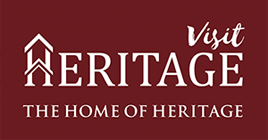To build your own Itinerary, click  to add an item to your Itinerary basket.
to add an item to your Itinerary basket.
Already saved an Itinerary?



You are here: UK History > Royal History > House of Normandy > King John | England's most hated king?
Much like his brother before him, King John was never meant to take the throne. Being the youngest son of Henry II and Duchess Eleanor of Aquitaine, John wasn’t expected to have much in the way of land and titles. He would however go on to be known as England’s most hated king.
Born: 24th December 1166, Beaumont Palace, Oxford
Died: 19th October 1216 (aged 49), Newark Castle, Nottinghamshire
Reign: 27th May 1199 – 19th October 1219
Parents: Henry II and Eleanor, Duchess of Aquitaine
Predecessor: Richard I (brother)
Successor: Henry III (son)
Spouse: Isabella, Countess of Gloucester (1189-1199) and Isabella, Countess of Angouleme (1...Read More
Much like his brother before him, King John was never meant to take the throne. Being the youngest son of Henry II and Duchess Eleanor of Aquitaine, John wasn’t expected to have much in the way of land and titles. He would however go on to be known as England’s most hated king.
Born: 24th December 1166, Beaumont Palace, Oxford
Died: 19th October 1216 (aged 49), Newark Castle, Nottinghamshire
Reign: 27th May 1199 – 19th October 1219
Parents: Henry II and Eleanor, Duchess of Aquitaine
Predecessor: Richard I (brother)
Successor: Henry III (son)
Spouse: Isabella, Countess of Gloucester (1189-1199) and Isabella, Countess of Angouleme (1200)
Children: Henry III; Richard, 1st Earl of Cornwall; Joan, Queen of Scotland; Isabella, Holy Roman Empress; Eleanor, Countess of Pembroke; Richard Fitzroy; Joan, Lady of Wales.
Royal House: Plantagenet / Normandy
John was believed to have been born in England on 24th December 1166 and is widely thought to have been Henry II’s favourite child, despite being the youngest. This was likely because unlike his older brothers, who continuously revolted against their father, John was always loyal to him. His brothers all believed that they deserved to rule alongside their father and that they ought to have their own territories, rather than wait until they received their inheritance. John however, supported his father and this paid off. He was named Lord of Ireland at the tender age of 10 and was gifted his own lands on the continent.
.jpg)
Image: King John
As a child, John rarely saw his parents or siblings. His parents disliked each other immensely, and his mother, Eleanor, would openly rebel against his father, King Henry. She would also publicly support their various sons in their attempts to overthrow him, especially Richard, the future Richard the Lionheart, who was believed to be her favourite child.
Like most younger royal sons, John was mostly raised by the church and it is believed that he spent much of his early years being educated and cared for by a church in France, before joining his oldest brother's (Young Henry's) household, where he was taught military skills and received lessons in diplomacy. It is a common misconception that John was cowardly and hopeless with a sword, a myth perpetuated by the romanticisation of his brother Richard's bravery, but really, John, though maybe not as skilled, was taught the same rules of battle.
In later childhood and early adulthood, John spent a great deal of time with his father, which sowed further discord between him and his brothers. His brothers all believed that John would receive a bigger inheritance than the rest of them because of his closeness with Henry, something that the kings of France, first Louis and then Philip would exacerbate. Much like his father and older brother would in their reigns, John would continue to fall in and out of alliances with his French counterparts.
After the early death of Young Henry, John’s brother Richard became heir presumptive with John being promised Richard’s lands in Aquitaine, their mother’s homeland, when he inherited, something Richard didn’t take too kindly to. He was also a bit miffed that their father, Henry II tried and failed to give John a kingdom before him by making him King of Ireland, though this was shortlived.
Richard became king on the death of their father but spent little of his reign in England, leaving much of the running of the country to his advisors. John even plotted with Philip of France to keep his brother in captivity after he was captured on his way home from crusade, though this was unsuccessful. Richard eventually forgave John for his part in this plot, but took all his lands, apart from Ireland. Perhaps biding his time, knowing that Richard had no legitimate children, John went on to support him on the continent.
During Richard’s reign, he named his and John's nephew, Arthur, as heir and made John promise that he would not return to England while he was away on crusade. John however did not keep this promise, he returned to England following a period of political turmoil, setting up his own court and giving the people an alternative regent and heir.
After news of Richard’s death spread, John and Arthur both vied for the crown. Although the Norman nobility preferred Arthur, John was named heir and eventually received the acceptance of both the English and Norman territories. Suspiciously, Arthur died not long after John was crowned, though whether this was on John's orders is still debated.
John's coronation took place in 1199 and from the moment he took the throne until the day of his death, was compared to his older brother. Richard was known as The Lionheart and was thought of as being tall, beautiful and courageous. John on the other hand is considered to be short, ugly, spiteful and petty. Whether or not he was better or worse than his brother is up for debate. John certainly did spend more time in England than Richard did.
In general, John is thought to be a hardworking administrator but he did lose the Duchy of Normandy and his other French lands resulting in the collapse of the Angevine Empire during his reign. He did also deal with a revolt from the English barons, however, his policy did lead to an early version of the English constitution and his judicial reforms had a lasting effect on the English Common Law system. John was actually very active in the admin side of his rule and spent much more time in England than either his brother or his father. The administration of justice was very important to him as his father had brought in a range of new laws, which meant that the royal courts had a more significant role in determining law and crime. These were unpopular with the barons and landowners, but were generally popular with the laypeople, who felt much more protected once they were in place. John is also known for the creation of the Magna Carta. So, while not as popular as Richard, maybe not as terrible as we’re led to believe.
Outside of his life as King, John was a known atheist, something that was frowned upon and was even ex-communicated at one point. He was known to like reading and gambling and was famously a connoisseur of jewels, a lover of opulent clothes and fondness for cheap wine.
Unlike his brother, John left several heirs and was even married twice, firstly to Isabella of Gloucester, his cousin on the orders of Henry II. John decided he’d actually much rather be married to a different Isabella – Isabella of Angouleme.
In order for his second marriage to take place, John had to abandon his first wife, which he did by arguing that he didn’t have papal permission to marry her in the first place based on the fact that they were cousins, it was eventually granted.
Whether John married the second Isabella for love or land isn’t entirely sure, she was only around nine years old at the time of the marriage and the pair had five children together, but there were no bastards noted during their relationship. Unlike his first marriage, where he took several mistresses, many of whom were married noble woman who gave him around five illegitimate children. The marriage to the second Isabella did result in a war with Philip of France though, who, as the victor, reassigned all of John’s lands to his nephew Arthur.
John’s reign eventually came to an end in 1216 after contracting dysentery, he was succeeded by his son, Henry, who went on to defeat both France and the rebel barons within a year of taking the throne.
Corfe Castle, Dorset
John did much of the expansion on the castle and kept his daughter prisoner there.
Conisborough Castle, Yorkshire
John stayed here for a time.
Cranborne Manor Gardens, Dorset
The manor at Cranborne is based on King John’s former royal hunting lodge and is one of the oldest surviving domestic buildings in England.
Devizes Castle, Wiltshire
John imprisoned one of his wives here.
Dover Castle, Dover
The castle building was begun in 1066, but King John had a number of underground tunnels added so he could surprise any invaders. The tunnels were used during WWII and the castle became a military command centre.
King John’s House and Heritage Centre, Romsey
This early medieval building dates back to the mid 13th century and though is named after King John, he didn’t have anything to do with the construction, though it is built in the same style as his hunting lodges and is a great place to find out more about the time period.
Lancaster Castle, Lancashire
John added to the castle, including building the King's Lodgings, Adrian's Tower and the Dungeon Tower.
Priory of the Order of St John of Jerusalem, Clerkenwell, London
John lived here for a while month in 1212.
Rochester Castle, Kent
John laid siege to the castle, the second largest siege in the castle's history.
Rockingham Castle, Northamptonshire
John's preferred hunting spot.
Salisbury Cathedral, Salisbury
You can see a copy of the Magna Carta here.
St Helen's Bishopgate, London
The church features an original plaque from the former Benedictine nunnery that was fiunded during John's reign.
The British Library, London
There are two of the four original Magna Carta documents held here, as well as some of John's teeth and bones in their collection.
The Wash National Nature Reserve, Norfolk
Perhaps the most enduring story of John's reign, he sent a baggage train across the Wash and lost the crown jewels, among other items.
Worcester Cathedral
The final resting place of King John, an effigy of the king features on the top of the tomb.
© Visit Heritage 2025. All Rights Reserved


We are now retrieving your search results. Please wait, this may take up to 30 seconds


![]()
Supporting the Destination
![]()
Quality Guarantee
We are now retrieving real time availability results. Please wait, this may take up to 30 seconds.

.png)


